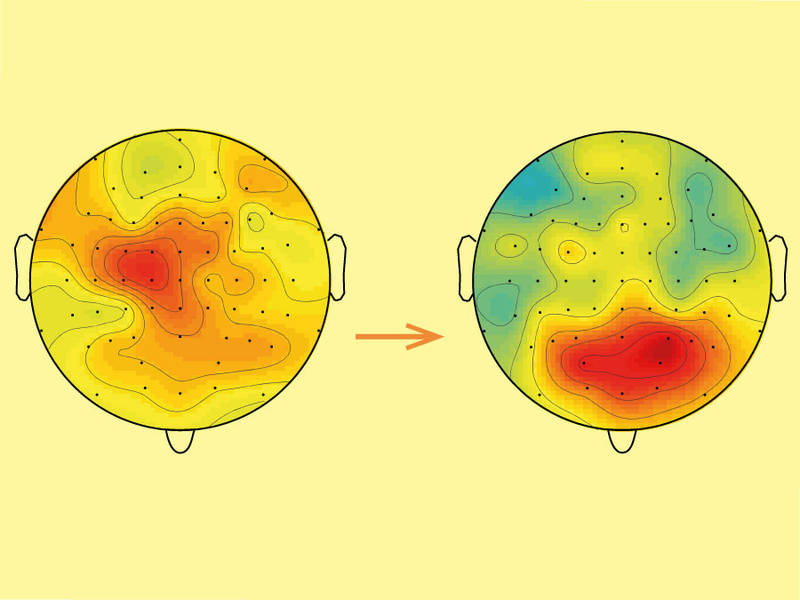The picture shows the EEG results during a short (left) and a long-lasting pain stimulus (right). The brain areas with the strongest activity are depicted in red. Short pain stimuli are processed in sensory brain areas, whereas ongoing pain is processed in frontal brain areas which are related to emotional processes. (Picture: E. Schulz et al., 2015, Prefrontal gamma oscillations encode tonic pain in humans, Cerebral Cortex, doi10.1093/cercor/bhv043, modified)
Technische Universität München scientists demonstrated that ongoing pain changes brain activity from sensory to emotional processes
Published 13, March 2015 at 800 × 600 in Technische Universität München scientists demonstrated that ongoing pain changes brain activity from sensory to emotional processes
Bookmark the permalink.

